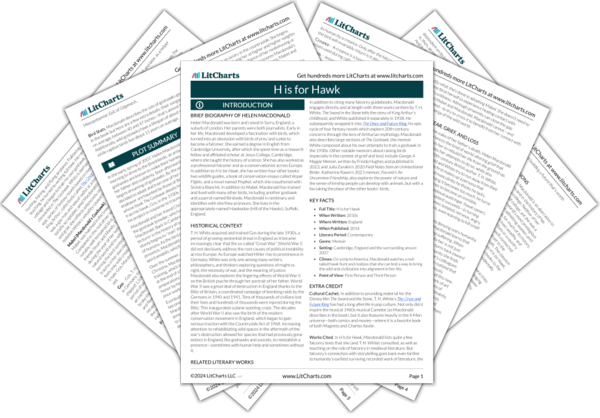Trained in English, Macdonald takes a step back from her general retelling of White’s story to offer some pointed analysis. In her view, White (and other falconers from previous eras) projects his own needs and unfulfilled wishes onto their birds and then try to possess these things through the process of taming the animal. She’s very comfortable imagining White’s reasons, and readers should note how his reasons do (and don’t) align with Macdonald’s own. Her sexuality doesn’t come into play in this book in a meaningful way, for example. But, like White, she faces an unruly, wild force in herself—grief—that she would very much like to tame.
